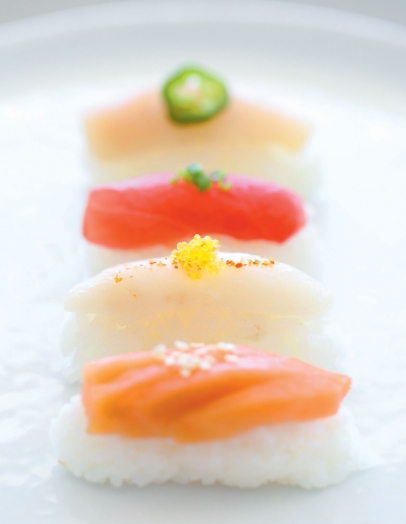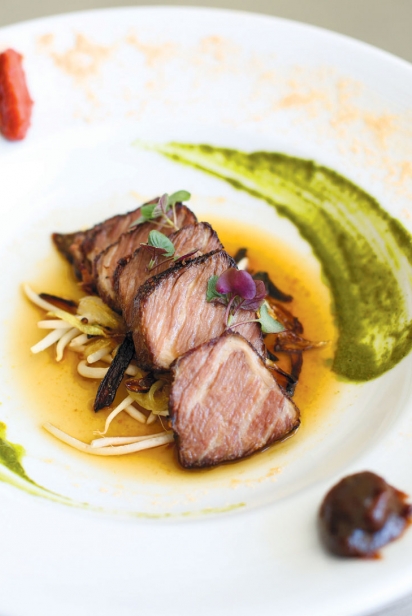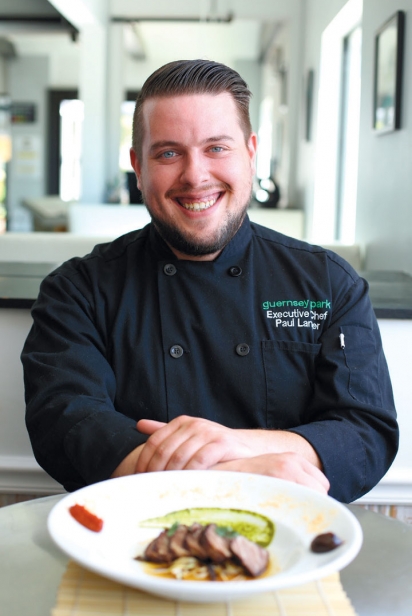The Elements of Sushi and Pho
SUSHI
Walk into Uptown’s Guernsey Park before mid afternoon close and you’ll hear laughter coming from the downstairs kitchen. The tone of the kitchen is light hearted, but orderly and buzzing with sounds of productivity. The staff is laidback, but purposeful. Now when it comes to sushi, they get pretty serious. Truong fills us in as he rolls sushi behind the counter. Many consider the word sushi to be synonymous with raw fish - if you hold this notion, you’d be wrong. Don’t feel bad, I learned this just a few hours ago.
Owner Truong Le has little control over the fish he’s shipped each day. He accepts nothing but the highest quality, but can’t really load up and head out to catch something else. Quality sushi rice is always an obtainable and affordable commodity. Truong has complete and total control over the consistency of the rice he serves. In fact, when it comes to sushi, rice is a much stronger assessment of the quality of the chef and authenticity of the sushi restaurant than the fish.
Truong says, “Ninety percent of what makes sushi… well, sushi, is the rice itself.” The fish, veggies, sauces, and garnishes are just secondary. The key to authentic sushi is it’s temperature. Sushi rice should be served warm (think body temperature). The fish on top of the sushi should be cold. It’s important to enjoy sushi as soon as they’re rolled, which is why you’ll receive rolls to your table as they’re ready. Cook time and amount of water is also important. You want each grain to be separate, not mushed together in a clump. Sushi shouldn’t fall apart before it reaches your mouth either. Whether you use your fingers, a fork, or chopsticks, it should remain cohesive until it’s in your mouth. It shouldn’t be chewy. Take a couple of chomps and it should be ready to swallow. Neta (ingredients aspect) and shari (sushi rice) need to unite in perfect harmony. The flavor of one should not upstage the other. The flavors of salinity and umami, sugar sweetness, and vinegar sour combine beautifully in authentic shari. If you’ve tried it, you know what I’m describing. If you haven’t, I recommend you roll on down to Guernsey Park or Covell Park and order yourself some sushi with a little more confidence now that you know what taste you’re looking for!
PHO
Chef Paul Langer loves pho and recognizes that Guernsey Park shares a neighborhood with mainstay pho restaurants that he would not dare try or want to compete with! This recipe was created with the intention of celebrating pho while using enough of their own interpretation to not be compared to their beloved and established neighbors in the Asian District. Chef Paul asserts, “Using bottled spring or distilled water in pho is essential. The broth is so clear in flavor and color. The goal is subtlety. Using water from the tap risks adding unwanted flavors from the mineral deposits and chemicals present. The more pure the water, the more pure the broth will be. If you have bad quality water, you can’t infuse it with enough flavor to mask that bad quality.” The pho broth tops the 48 Hour Short Ribs that probably won’t last more than 10 minutes on your table. Adaptations were made to the traditional pho recipe because of the context in which it’s served. The broth needed to be quite pungent, but reminiscent of traditional flavors in pho. The attention to detail in this pho, as with all dishes at Guernsey Park, is outstanding.








